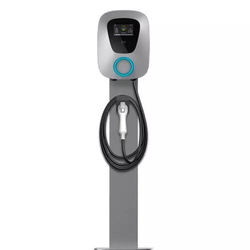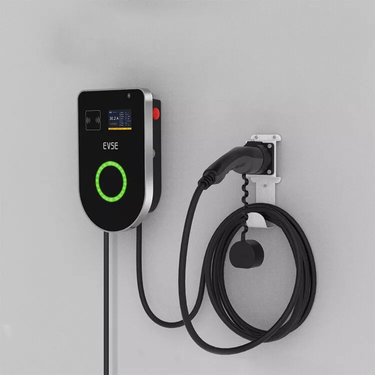Portable Electric Vehicle charger
Types of fast chargers for an electric car
You might assume that any fast charger fits all modern electric vehicles, just like all gas-powered vehicles can refuel in one way.
Unfortunately, everything more complicate here. There are three main types of portable electric vehicle charger:
- Kinouwell KW-PEVC3401 30KW/40KW
- KW-PEVC3106 60KW/80KW Commercial DC EV Charger Station
- Kinouwell KW-PEVC3107 120KW OCPP DC Fast EV Charging Station
All essentially perform the same task – pumping the maximum amount of electricity. However, which fast charger you can use depends on your vehicle.
Many observers equate the existing difference between fast charger standards to a battle between VHS and Betamax for video dominance. For reference: VHS won the battle, but lost the war to DVDs, which widely uses today.
What standards for fast charging?
The comparison falls short because fast chargers have the potential to support multiple standards in a single charger with minimal component duplication. For better or worse, there are several standards for fast charging of electric vehicles.
There is no common standard, which, of course, would be nice. There are many public fast charging stations end up with multiple vehicle chargers of different standards.

Charger sizes and its types
We expect the debate about the superiority of one standard over others to continue. Differences of opinion base on preference for vehicle charger size ease of use, power system quality, or clearance of different charging levels. Don’t worry too much about these debates.
The vehicle has portable electric vehicle charger, plug in the car charges up with electricity and the journey continues. But the details are the sore point. Today there are several vehicle chargers and charging stations. It is not at all easy to understand something. The sector has noticed this and is working on standardizing solutions.
The portable electric vehicle charger charging station
The electricity grid is the basis of the charging infrastructure. Across the world, there are mainly uses due to its many advantages. In alternating current the polarity of the current is systematically change. Therefore, the current arrives at the charging station as alternating current.
But wait a minute! The electric car equip with a battery that must recharge with direct current (DC). Because the batteries can only charge with direct current.
What happens at DC charging station?
It depends on the charging station uses. In the case of a DC charging station, the conversion from alternating current to direct current already takes place in the charging station.
This means that the battery of the electric car can recharge directly. This process lasts, depending on the battery, from 10 to 15 minutes with an output of about 350 kW. You could charge 60,000 cell phone batteries at the same time or light 3,500 100-watt bulbs at once.
How much charging station takes time for full charge?
With an AC electric vehicle charger or an AC charger charging station has the alternating current and it must convert into direct current in the vehicle. Portable electric vehicle charger is mainly found in places where the car can stand for an extended period, for example, at home or on a company yard.
In these cases, the full recharge lasts, depending on the converter installed in the car, from about 3 to 4 hours (with an integrated 22 kW converter) or from 6 to 8 hours (with an integrated 11 kW converter).
Comparison between DC and AC charging station
Portable electric vehicle charger is more common in Switzerland than CC (fast) charging stations. The main reason is that installing and managing them costs less. DC fast charging stations are much larger than AC wall boxes and require very high connection powers (equivalent to the requirements of 6–8 detached houses).
In theory, it would also be possible to recharge an electric car from common household electrical sockets. However, for electric cars this is not very suitable, since the continuous load could overload the socket.
The electrical sockets of the house, as well as the electrical systems, could overheat and cause, in extreme cases, a fire (domestic electrical sockets in Switzerland they are typically protected with fuses of about 10 amperes, in Europe in part with even higher or even lower amperes).

The vehicle charger differs according to the charging station (AC or DC).
For a charging station with alternating current for example, portable electric vehicle charger the most popular type of vehicle charger. It is the type 2 vehicle charger and it is also the standard at VW group brands. This ensures that the power source and the vehicle match up everywhere.CEE vehicle chargers are recommended for charging boxes to be connected to the home via a vehicle charger.
Portable electric vehicle charger best suited for high currents and long-lasting charging processes. The CEE vehicle charger already uses, for example, for campers and caravans and is a classic camping vehicle charger.
For charging in your garage it is recommended to uses. If it possible, at least the CEE charging vehicles charger for industrial. However, it is recommended that an electrician connect the fix portable electric vehicle charger to the domestic installation.
The Combined Charging System (CCS)
It is often uses for charging with direct current (in DC fast charging stations). Here the type 2 vehicle charger simply integrates with two additional power contacts for the fast charging function. This type of vehicle charger is also called “Combo 3”.
Thus the car can recharge from both an AC and a DC power source. Several international associations and commissions have already confirmed portable electric vehicle charger as a fast charging standard for electric cars. CCS is also the standard for fast charging at the brands of the AMAG group.
The ecological balance for portable electric vehicle charger
In principle, electric cars drive zero emissions and in terms of ecological balance they are far ahead of combustion engines. We can therefore say that electric cars are much more environmentally friendly if we consider only the actual driving.
However, the electricity, or rather the energy mix, which uses to recharge also affects the eco-sustainability of the electric car. Electricity rarely comes entirely from renewable sources such as wind, solar or hydroelectricity. The ecological balance of an electric car is therefore not equal to zero.
If the electricity comes, for example, exclusively from lignite-fired power plants, the ecological balance is even worse. In addition, a lot of energy consumes to manufacture the battery.

